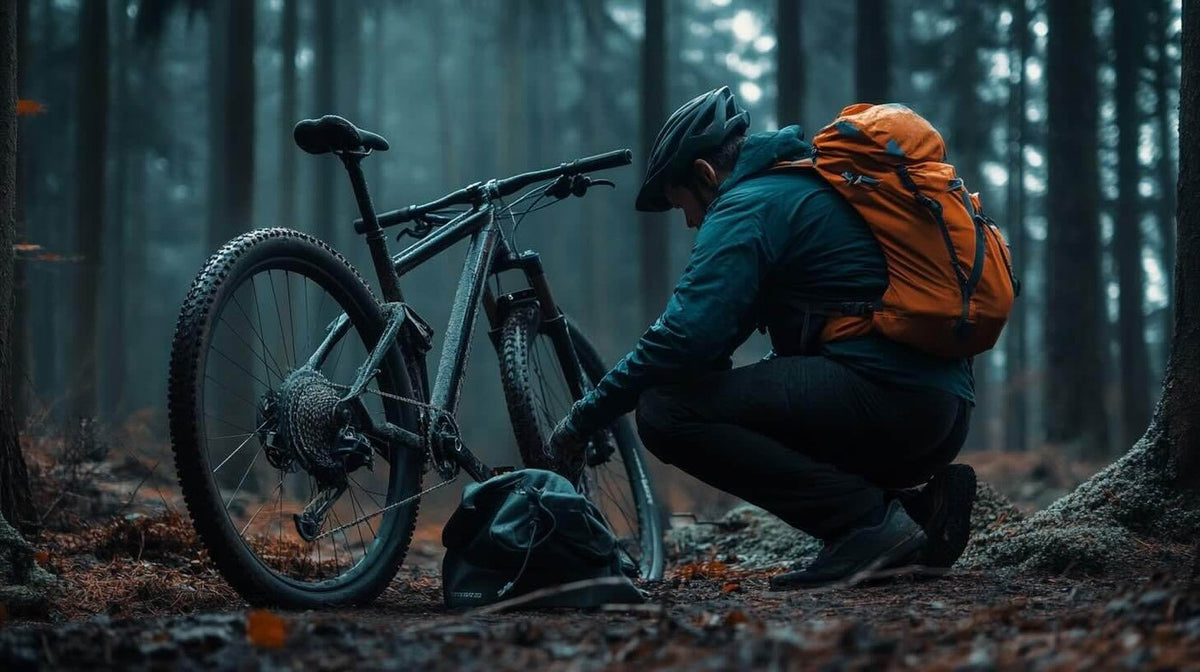
What PSI Should Bike Tires Be? A Complete Rider’s Guide
|
|
Time to read 3 min
|
|
Time to read 3 min
Getting the right tire pressure is one of the most important parts of bike maintenance. But "what PSI should bike tires be?" isn’t a one-size-fits-all question. Your ideal PSI depends on the type of bike you ride, your weight, terrain, riding style, and even the season. In this guide, we’ll walk you through how to fine-tune tire pressure for road bikes, mountain bikes, hybrids, and more—so you get the perfect balance of speed, grip, and comfort.
Table of contents
Road Bikes (23-28c tires): Typically run between 80-120 PSI. Lighter riders can drop closer to 80, while heavier riders may prefer the upper range.
Gravel Bikes (35-45c): Generally require 40-60 PSI for comfort and control over mixed terrain.
Mountain Bikes (2.1-2.4” tires): Most MTB riders use 25-35 PSI, depending on conditions and bike setup.
Hybrid Bikes (28-42c): Fall somewhere between road and gravel bikes, usually 50-70 PSI.
Always check your tire sidewall for the recommended PSI range, and never exceed the max rating.
Racing or Competitive Riding: Aim for the higher end of the PSI range to reduce rolling resistance and improve speed.
Long-Distance or Recreational Use: Lower PSI slightly for more comfort and less fatigue.
Off-Road or Technical Trails: Reduce pressure to improve grip and shock absorption (especially MTB tires).
Use this basic formula as a starting point:
Base PSI + (Rider weight in kg ÷ 10) × 1.5
Example: 70kg rider using a 60 PSI base would inflate to about 70 PSI. Add 3-5 PSI for each 10kg of cargo or panniers.
Tubeless tires allow you to run 5-15 PSI lower without risking pinch flats.
You’ll need sealant and an airtight rim fit. For a full walkthrough, see our guide on how to inflate tubeless bike tires .
Check regularly for air loss and top off as needed.
Hot Weather: Air expands—avoid inflating to max PSI in summer.
Cold Weather: Air compresses—check pressure weekly and expect a 1-2 PSI drop per 10°C.
High Altitude: Expect different handling; test and adjust PSI after climbs or travel.
Thumb Test: Road tires should feel firm; MTB tires should compress slightly (~5mm).
Contact Patch: Post-ride, inspect the tire's footprint. A thin center line = overinflated. Too wide = underinflated.
Guesswork doesn’t cut it—especially when performance and safety are at stake. The Woowind BP188 delivers up to 120 PSI with precise digital control, helping you dial in the perfect pressure for your ride.
Need something versatile for all your bikes? Check out our full electric air pump collection .
Check tire pressure weekly (more often in winter).
Always adjust PSI before long rides or terrain changes.
Record your optimal front and rear PSI once dialed in.
For more inflation techniques, visit our bike tire inflation guide .
Typically between 80–120 PSI. Adjust based on your weight and comfort—lighter riders can go lower.
At least once a week, or before any long or high-speed rides. Cold weather requires more frequent checks.
Usually, the rear tire needs 3–5 PSI more due to weight distribution. Adjust accordingly.
You can go 5–15 PSI lower than tubed setups for better grip and comfort. Just monitor sealant and air loss.
Too soft = sluggish handling; too hard = harsh ride. Check the contact patch or use the thumb test